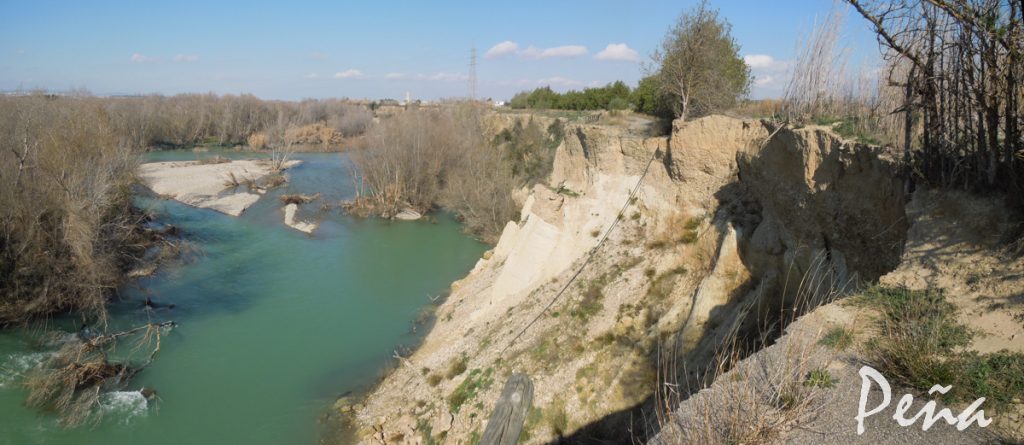Dynamic changes in the Lower Gállego River (Ebro Basin, NE Spain) and its relationship with the anthropic activities and the Quaternary substrate.
Peña Monné, J.L., Rubio, V., Sampietro Vattuone, M.M., Longares, L.A., Sánchez Fabre, M., 2020. Dynamic changes in the Lower Gállego River (Ebro Basin, NE Spain) and its relationship with the anthropic activities and the Quaternary substrate. Geographical Research Letters, 46 (2), 373-395. |

RESUMEN.
El curso bajo del río Gállego ha sido fuertemente degradado desde los años 1960 por la actividad antrópica (extracción de áridos, acu-mulaciones de escombros, obras de encauzamiento) que ha conducido a una fuerte incisión. Aunque este tipo de procesos inducidos por el hombre son habituales en la bibliografía fluvial, en este caso se aprecian efectos más complejos. Son, por ejemplo, la profundidad y velocidad de la incisión, la falta de relación entre puntos de máxima intervención y los de mayor inci-sión o la continuidad del proceso cuarenta años después de cesar ese tipo de acciones. La respuesta a estos desajustes está en el papel que está jugando la exhumación del sustrato pleistoceno infrayacente, afectado por procesos sinsedimentarios de karstificación. La aparición de paleodolinas rellenas de sedimentos finos en el fondo y laterales de la incisión es actualmente el principal determinante de su importancia y continuidad. Además, estas paleodepresiones dirigen la dinámica y trazado del río y puntualmente fa-vorecen ensanchamientos laterales. Esto propicia la aparición de un nuevo lecho (Qt13) a medida que el lecho de los años 1960 (Qt12) va quedando como una terraza colgada entre 5 y 11 m sobre el nuevo fondo aluvial. No hay antecedentes de este tipo de consecuencias en la dinámica fluvial regional.
ABSTRACT.
The lower Gállego River has been strongly degraded since the 1960s due to human activity (gravel mining, dump accumulation, channeling works), which has produced a deep channel incision. Although these human-driven processes are usually reported in fluvial bibliography, in this case, more complex results are observable. For instance, regarding the depth and incision rates, we observed no relationship between the most anthropically impacted areas and the sections with the deepest incisions; moreover, the deepening process continues 40 years after the human interventions ceased. The reason for this maladjustment is the role played by the exhumation of the underlying Pleistocene substrate, affected by the synsedimentary processes of karstification. The appearance of paleodolines filled with fine sediments on the incision bottom and sides is the main factor conditioning the continuity and magnitude of the process. Besides, these paleodepressions direct the river dynamics and course, thus favoring its widening when they appear and causing the development of a new riverbed (Qt13) while the 1960s floodplain (Qt12) is becoming an old terrace located between 5 and 11 m above the new alluvial bottom. There are no previous records about this kind of consequences in the regional fluvial dynamics



